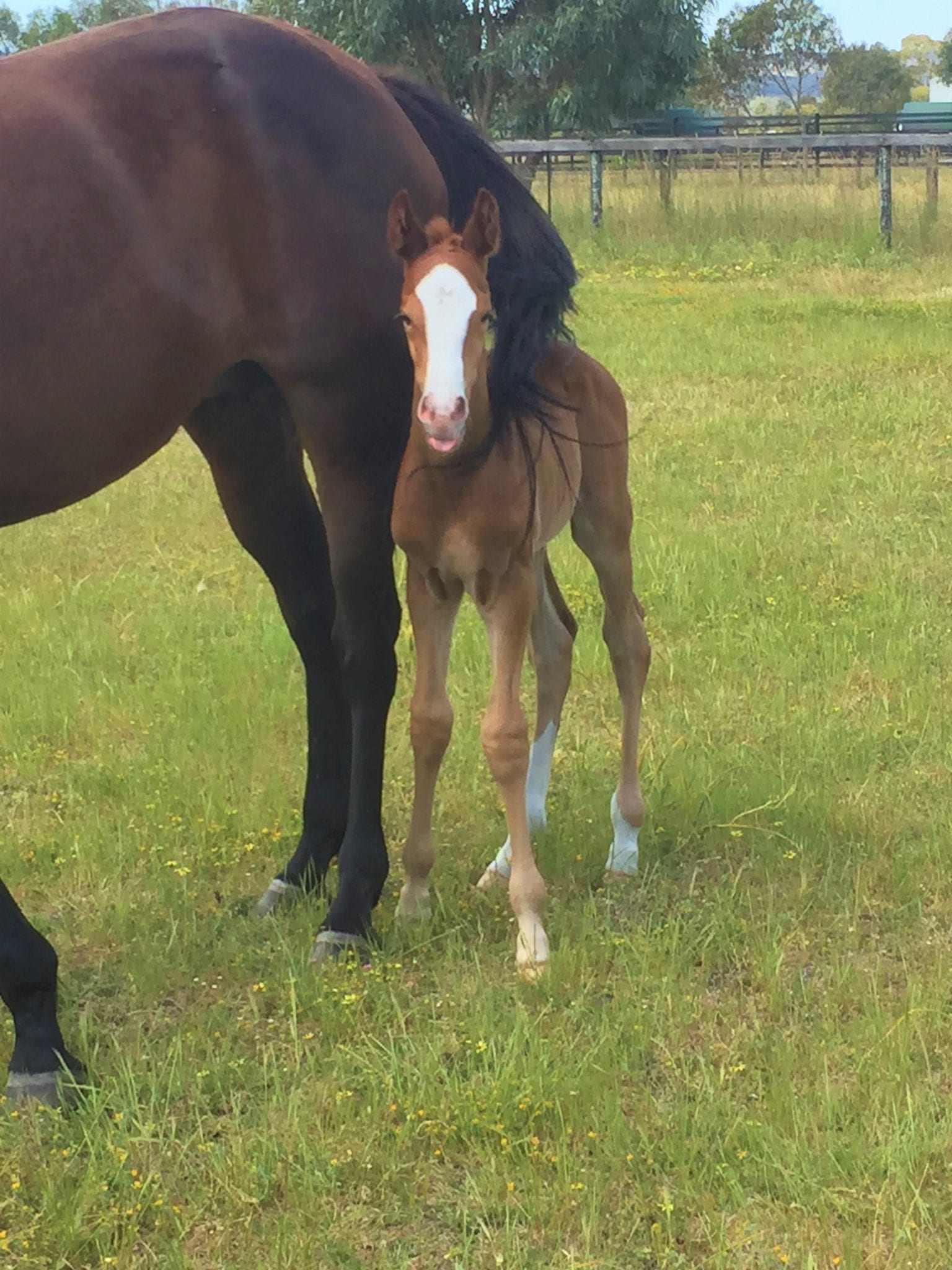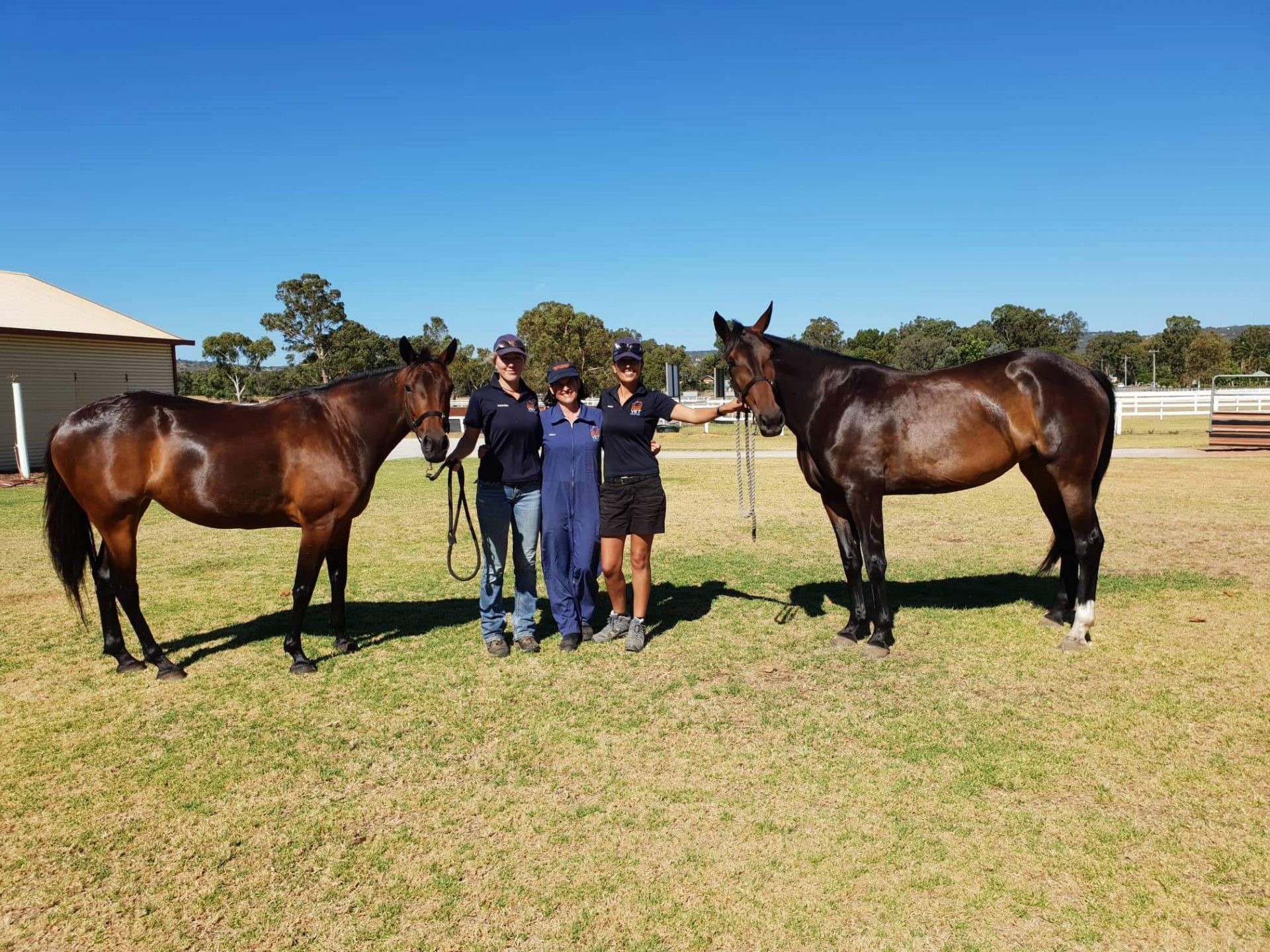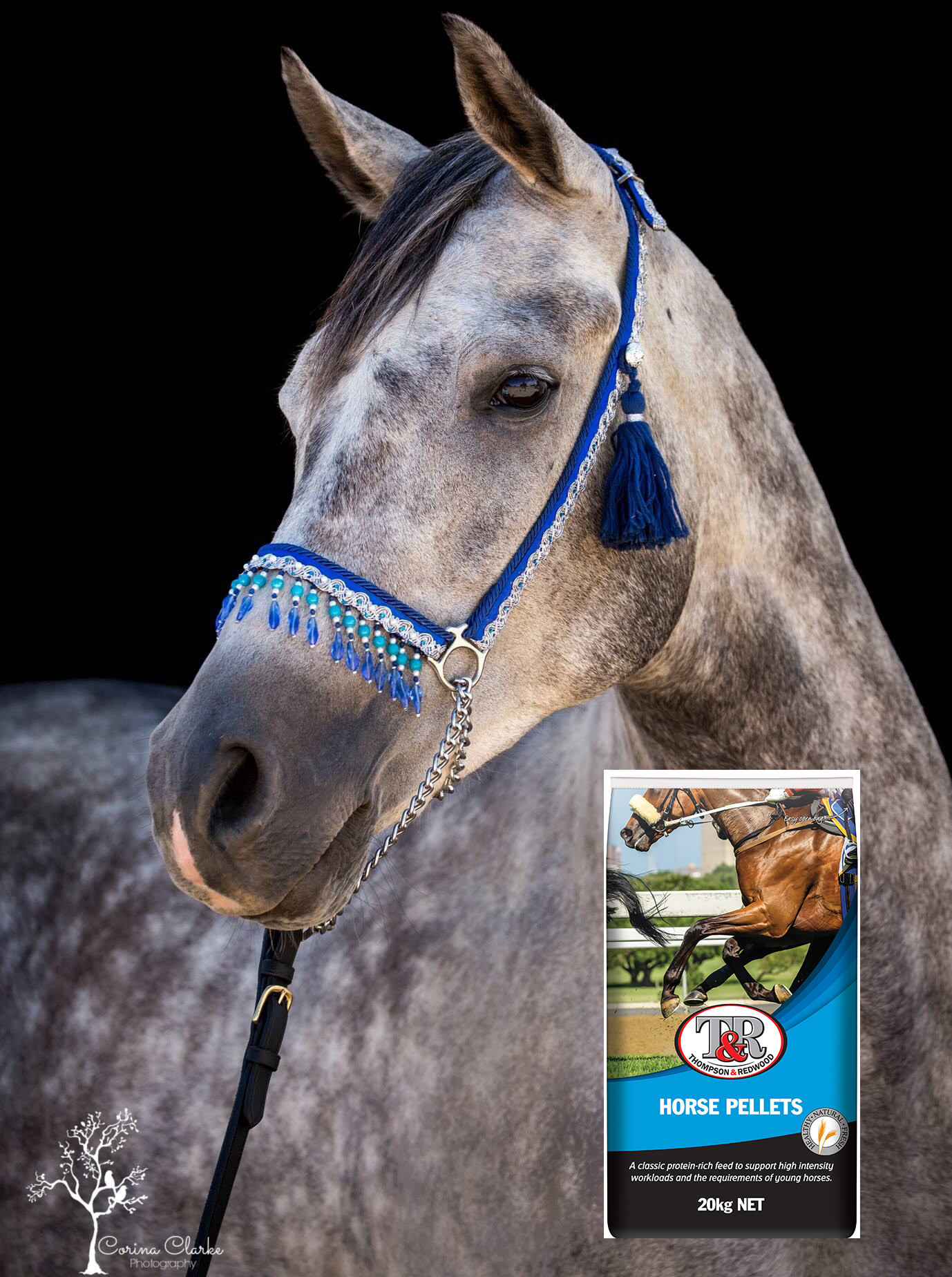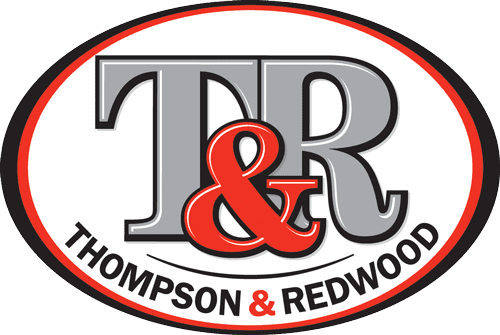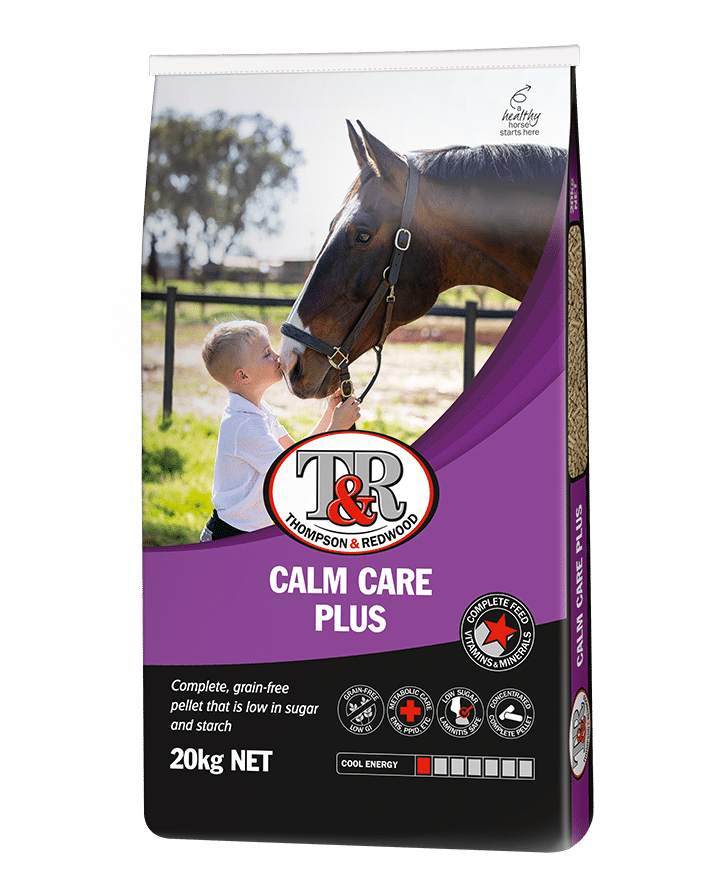
From grass roots to high performance, we have an equine feed to suit
A feed for (almost) every animal on the farm
Quality
Ruminant feeds to support productivity
We’re passionate about poultry
superior feed for broodmares, young stock & commercial studs
with added pre & probiotics
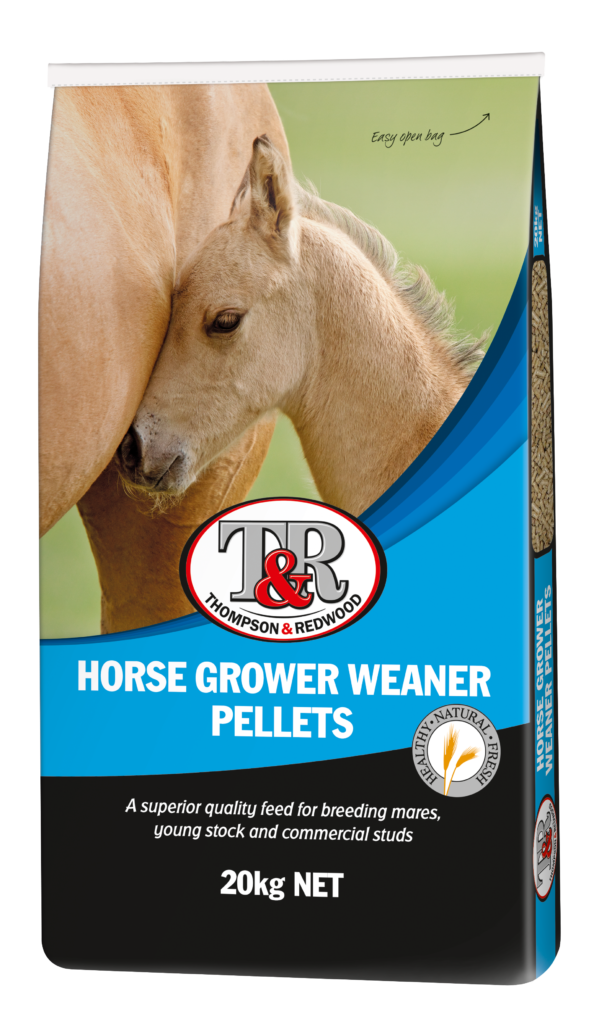
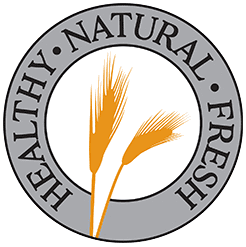
Making healthy, natural and fresh stock feed since 1985
Thompson & Redwood makes affordable and nutritionally balanced stock feed for the horse and agricultural
industries. Our recipes never change and are milled daily from Western Australian grain so you know what
you’re feeding is healthy, natural and fresh.
What's your
horse feeding challenge?
- Fizzy horse?
- Poor keeper?
- At risk of laminitis?
![]() Let our veterinary and nutrition team support you and your horse with our carefully formulated complete horse feeds.
Let our veterinary and nutrition team support you and your horse with our carefully formulated complete horse feeds.
Find the feed most suited to your horse or pony.
What's your
horse feeding challenge?
- Fizzy horse?
- Poor keeper?
- At risk of laminitis?
![]() Let our veterinary team support you and your horse with our carefully formulated complete horse feeds.
Let our veterinary team support you and your horse with our carefully formulated complete horse feeds.
Find the feed most suited to your horse or pony.
DEHYDRATION RISK - Why is it high in winter, even if it`s cold? Believe it or not, hydration is just as important in winter as it is in summer but is often overlooked. The cooler temperatures can actually decrease the urge to drink, so even though our horses are still exercising, they may not be getting the water needed.
💧Hydration is especially important if you are needing to feed hay that is lower in quality to reduce the risk of impaction colic.
What can you do?
1️⃣ It`s important to make sure your horse is getting enough essential electrolytes to support their critical processes and encourage them to drink. You can add salt to their feed or give them access to a pink salt block in their stable or paddock. Salt is an essential electrolyte and is also vital for the drinking reflex.
2️⃣ Offer a soaked mash feed or add a fibre mash supplement like Lupin Fibre Cubes or Lupin Fibre Boost with plenty of water to give them extra hydration. These can even be soaked with warm water to help keep fight the winter chills.
#lupinfibrecubes #mashfeed #equinefeed #horsefeed #horsemash #lupinfibreboost #hydration #tiptuesday
Jul 22

HOW TO FEED: A kid`s pony
They may be small, but it isn`t always easy to get the diets for our ponies just right, especially when they are looking after precious cargo. Ponies can be prone to weight gain and metabolic conditions, and they need to be cool and calm to help little riders stay safe. Their small size doesn`t mean we can just feed them less though; they still need a complete, balanced and nutritious diet to keep them healthy and looking their best.
1. Start with fibre and make sure they are getting minimum 1.5-2% of their bodyweight in pasture and/or hay daily.
2. Opt for cool energy sources and hays and feeds that are low in sugar and starch. This can help with keeping them calm, but is also vital for those that might be prone to conditions like laminitis or cushings.
3. Make sure they are getting their daily requirements for protein, vitamins and minerals. Even if they are good doers, pasture and hay alone won`t always provide enough of these nutrients.
4. Avoid over or underfeeding. Even if they need to lose weight, a horse or pony should never have a harshly restricted feed intake. Adjust the energy (calories) in the diet instead to manage weight.
Our go-to feeds for ponies are Lupin Fibre Boost, Calm Care Plus and Lupin Fibre Cubes.
🟢Lupin Fibre Boost is a complete, high fibre mash that is ultra-low in sugar and starch. It`s made using our classic Lupin Hulls with the added benefit of a fully fortified vitamin and mineral mix and pre & probiotics.
🟣Calm Care Plus is a complete, concentrated pellet that is ultra-low in sugar and starch. It`s high in fibre and grain-free goodness, made with lupin hulls, lupins, faba beans and oil with a fully fortified with vitamins and minerals and pre and probiotics.
🟡Lupin Fibre Cubes are our original lupin hull fibre supplement, with just the goodness of quality fibre and no additives. Ideal for adding a supplement to or feeding with Calm Care Plus.
Jul 17

𝗡𝗦𝗖 - 𝗡𝗼𝗻-𝗦𝘁𝗿𝘂𝗰𝘁𝘂𝗿𝗮𝗹 𝗖𝗮𝗿𝗯𝗼𝗵𝘆𝗱𝗿𝗮𝘁𝗲𝘀, 𝘄𝗵𝗮𝘁 𝗮𝗿𝗲 𝘁𝗵𝗲𝘆 𝗮𝗻𝗱 𝘄𝗵𝘆 𝗱𝗼 𝘁𝗵𝗲𝘆 𝗺𝗮𝘁𝘁𝗲𝗿?
You`ve probably heard us talk about NSC in feed, hay, fibres and pastures, but have you ever wondered what we actually mean?
❓What are NSC?
Non-Structural Carbohydrates are all of the carbohydrates in a plant cell that are not part of the cell wall, which includes sugars, starch and fructans. They are a vital source of energy for the plant, used for its growth and function. NSC levels can be calculated by adding the Water-Soluble Carbohydrate level of a feed (WSC=simple sugars+fructans) to its starch level.
❓What are NSC in?
Because they`re part of a plant, NSC are in almost all of the plant materials we feed our horses, including, hay, pasture, grains, fibres and molasses. The NSC level can vary greatly depending on a range of factors including:
- Type of plant or grain
- Maturity of the plant
- The part of the plant or grain that is used
- If the plant as stressed or not
- How an ingredient has been processed or treated when used in a feed
- Even the time of day for pastures!
❓Why do we measure NSC values?
NSC are a quick energy source for horses, and they`re easily digested and absorbed in the small intestine. As starches and sugars are digested, enzymes break them down into glucose. Once glucose enters the bloodstream, the pancreas releases insulin to help move glucose into cells for energy.
But if too much glucose enters the bloodstream — particularly from a diet high in NSC — it can overload the system. Over time, the body’s cells may become less responsive to insulin, leading to insulin resistance.
💡Think of it like your emails. If you get a few daily you can read each one, but if you get overloaded with junk, you stop reading them and soon they just go straight to your junkmail.
This becomes a serious issue in horses with metabolic conditions like Equine Metabolic Syndrome (EMS), PPID (Cushing’s), or those prone to laminitis, where even moderate spikes in blood glucose and insulin can be dangerous.
Jul 15

Tech People: AI is getting so smart!
Horse people: is it though?
Did you know that we are a NO AI ZONE? What you see on our website, marketing and social media is created and run only by humans, and knowledgeable horsey humans at that! We don`t use AI to generate posts, content, images, graphics, articles or blog posts.
Why? Because our customers are real people, so we are keeping it real for you.
#fridayfunny - thanks to Lynne from ShiteDressageUnited for sharing this image.
Jul 11

When they`re looking after a special little person with big dreams, they need to be calm, careful and healthy.
We have the feeds to fuel them on this job of a lifetime.
Junior members of our team, Ocean and `Cruise` make a great partnership and are a joy to watch.
#horsefeed #fuelledbytandr @tui_rei @lyla_creative
Jul 9

⚠️ARGT - What is it, and why hay testing is essential!
Unfortunately, there have been a number of horses impacted by Annual Ryegrass Toxicity (or ARGT) this year. Understanding what ARGT is and where it comes from is vital for WA horse owners to manage the risks.
𝗪𝗵𝗮𝘁 𝗶𝘀 𝗔𝗥𝗚𝗧?
ARGT is a very serious condition that occurs when a horses and livestock consume Annual Ryegrass that is infected by the Rathayibacter toxicus bacteria. The problem isn’t caused by the ryegrass itself but the nasty toxin that’s produced as a result of the infection.
𝗛𝗼𝘄 𝗱𝗼𝗲𝘀 𝘁𝗵𝗲 𝗴𝗿𝗮𝘀𝘀 𝗯𝗲𝗰𝗼𝗺𝗲 𝗶𝗻𝗳𝗲𝗰𝘁𝗲𝗱?
The bacteria hitch a ride with tiny nematodes (a type of worm) which target and takeover the young, growing flowers and seedheads, replacing them with galls. The bacteria can be introduced to a paddock by the nematodes, or it may be present already in the soil.
The galls are the perfect environment for the bacteria, which then multiply and produce a toxin (corynetoxin) within the seedhead, which is transferred to the animal when eaten.
Unfortunately, ryegrass that has been infected will remain toxic even after the grass has dried off and been cut, meaning that hay cut from it will be toxic too.
𝗛𝗼𝘄 𝗱𝗼𝗲𝘀 𝘁𝗵𝗲 𝗮𝗻𝗶𝗺𝗮𝗹 𝗯𝗲𝗰𝗼𝗺𝗲 𝗶𝗻𝗳𝗲𝗰𝘁𝗲𝗱?
Any grazing animals, from horses through to sheep and even pigs are susceptible to ARGT, when they eat infected pasture or hay.
The toxins have a cumulative effect. This means that the more the animal eats, the more it will affect them. Even if they have breaks between consumption for up to 9 weeks, the toxin can still accumulate.
Clinical signs of ARGT can show as early as 4 days post-introduction to infected feed but can also take weeks to develop.
𝗪𝗵𝗮𝘁 𝗮𝗿𝗲 𝘁𝗵𝗲 𝘀𝘆𝗺𝗽𝘁𝗼𝗺𝘀?
The toxin that causes ARGT impacts the central nervous system, and symptoms can be quite severe and quick to show. Symptoms include:
➡️ Staggering or wobbling
➡️Disoriented
➡️Muscle tremors
➡️Seizures
➡️Hyper-reactivity
➡️Sudden death
Cont ⬇️⬇️⬇️
Jul 8

Are you looking for a cool feed that supports eventing performance?
Calm Care Plus is a cool source of calories to support the needs of performance horses, from grass roots to an elite level.
We`ve packed it full of nutrients to make a complete feed that not only meets their daily requirements, but contains added extras that optimise their health, function and performance, including:
✅ Added magnesium for muscle function and reducing tension
✅ Pre & probiotics for gut health when travelling and competing regularly
✅ Additional amino acids lysine, methionine and threonine for topline building
✅ Antioxidants and Vitamin C to support recovery, health and immune function
✅ Grain-free and grain by-product formula is safe for horses with ulcers and gastric issues
✅ Highly concentrated formula supports a lower feeding rate
Plus, it`s locally owned and made!
Jul 6

DEHYDRATION RISK - Why is it high in winter, even if it's cold? Believe it or not, hydration is just as important in winter as it is in summer but is often overlooked. The cooler temperatures can actually decrease the urge to drink, so even though our horses are still exercising, they may not be getting the water needed.
💧Hydration is especially important if you are needing to feed hay that is lower in quality to reduce the risk of impaction colic.
What can you do?
1️⃣ It's important to make sure your horse is getting enough essential electrolytes to support their critical processes and encourage them to drink. You can add salt to their feed or give them access to a pink salt block in their stable or paddock. Salt is an essential electrolyte and is also vital for the drinking reflex.
2️⃣ Offer a soaked mash feed or add a fibre mash supplement like Lupin Fibre Cubes or Lupin Fibre Boost with plenty of water to give them extra hydration. These can even be soaked with warm water to help keep fight the winter chills.
#lupinfibrecubes #mashfeed #equinefeed #horsefeed #horsemash #lupinfibreboost #hydration #tiptuesday
... See MoreSee Less

- likes 4
- Shares: 5
- Comments: 0
0 CommentsComment on Facebook
HOW TO FEED: A kid's pony
They may be small, but it isn't always easy to get the diets for our ponies just right, especially when they are looking after precious cargo. Ponies can be prone to weight gain and metabolic conditions, and they need to be cool and calm to help little riders stay safe. Their small size doesn't mean we can just feed them less though; they still need a complete, balanced and nutritious diet to keep them healthy and looking their best.
1. Start with fibre and make sure they are getting minimum 1.5-2% of their bodyweight in pasture and/or hay daily.
2. Opt for cool energy sources and hays and feeds that are low in sugar and starch. This can help with keeping them calm, but is also vital for those that might be prone to conditions like laminitis or cushings.
3. Make sure they are getting their daily requirements for protein, vitamins and minerals. Even if they are good doers, pasture and hay alone won't always provide enough of these nutrients.
4. Avoid over or underfeeding. Even if they need to lose weight, a horse or pony should never have a harshly restricted feed intake. Adjust the energy (calories) in the diet instead to manage weight.
Our go-to feeds for ponies are Lupin Fibre Boost, Calm Care Plus and Lupin Fibre Cubes.
🟢Lupin Fibre Boost is a complete, high fibre mash that is ultra-low in sugar and starch. It's made using our classic Lupin Hulls with the added benefit of a fully fortified vitamin and mineral mix and pre & probiotics.
🟣Calm Care Plus is a complete, concentrated pellet that is ultra-low in sugar and starch. It's high in fibre and grain-free goodness, made with lupin hulls, lupins, faba beans and oil with a fully fortified with vitamins and minerals and pre and probiotics.
🟡Lupin Fibre Cubes are our original lupin hull fibre supplement, with just the goodness of quality fibre and no additives. Ideal for adding a supplement to or feeding with Calm Care Plus.
... See MoreSee Less


 +3
+3
2 CommentsComment on Facebook
Our new drawstring gear bags are coming in handy holding puppies...and kids! Thanks to sponsored rider Jodi for the great photos.
.
.
.
#teamtandr #ThompsonandRedwood
... See MoreSee Less


4 CommentsComment on Facebook
𝗡𝗦𝗖 - 𝗡𝗼𝗻-𝗦𝘁𝗿𝘂𝗰𝘁𝘂𝗿𝗮𝗹 𝗖𝗮𝗿𝗯𝗼𝗵𝘆𝗱𝗿𝗮𝘁𝗲𝘀, 𝘄𝗵𝗮𝘁 𝗮𝗿𝗲 𝘁𝗵𝗲𝘆 𝗮𝗻𝗱 𝘄𝗵𝘆 𝗱𝗼 𝘁𝗵𝗲𝘆 𝗺𝗮𝘁𝘁𝗲𝗿?
You've probably heard us talk about NSC in feed, hay, fibres and pastures, but have you ever wondered what we actually mean?
❓What are NSC?
Non-Structural Carbohydrates are all of the carbohydrates in a plant cell that are not part of the cell wall, which includes sugars, starch and fructans. They are a vital source of energy for the plant, used for its growth and function. NSC levels can be calculated by adding the Water-Soluble Carbohydrate level of a feed (WSC=simple sugars+fructans) to its starch level.
❓What are NSC in?
Because they're part of a plant, NSC are in almost all of the plant materials we feed our horses, including, hay, pasture, grains, fibres and molasses. The NSC level can vary greatly depending on a range of factors including:
- Type of plant or grain
- Maturity of the plant
- The part of the plant or grain that is used
- If the plant as stressed or not
- How an ingredient has been processed or treated when used in a feed
- Even the time of day for pastures!
❓Why do we measure NSC values?
NSC are a quick energy source for horses, as the starches and sugars are easily digested and absorbed in the small intestine where enzymes break them down into glucose. Once glucose enters the bloodstream, the pancreas releases insulin to help move glucose into cells for energy.
But if too much glucose enters the bloodstream — particularly from a diet high in NSC — it can overload the system. Over time, the body’s cells may become less responsive to insulin, leading to insulin resistance.
💡Think of it like your emails. If you get a few daily you can read each one, but if you get overloaded with junk, you stop reading them and soon they just go straight to your junkmail.
This becomes a serious issue in horses with metabolic conditions like Equine Metabolic Syndrome (EMS), PPID (Cushing’s), or those prone to laminitis, where even moderate spikes in blood glucose and insulin can be dangerous.
Understanding and managing NSC intake is key to keeping these horses healthy — especially when their workload doesn't match their energy intake or their metabolism is already compromised.
❗REMEMBER:
All horses are different, and while not every horse will need a low-NSC diet, those that have metabolic issues and sensitivities should have their NSC levels managed very carefully across their pasture, hays and feeds.
If you're ever not sure about your horse's metabolic health, book them in for a check with your vet, then chat to our team about our range of ultra-low starch and sugar feeds that could help to support them.
... See MoreSee Less

0 CommentsComment on Facebook
Have you heard of the Pass Wide and Slow Awareness Ride? It's WA's first official ride and joins the global movement that aims to promote road safety for horses and riders. It's a peaceful, high-visibility ride that is supported by local authorities, business and the community.
WHAT: Pass Wide and Slow Awareness Ride – Western Australia
WHEN: Sunday, 14th September 2025
WHERE: Departs from State Equestrian Centre, Brigadoon
For more information and to get involved, check out the official event page below:
www.facebook.com/share/p/1ZfdLeYUbh/?mibextid=wwXIfr
... See MoreSee Less
This content isn't available right now
When this happens, it's usually because the owner only shared it with a small group of people, changed who can see it or it's been deleted.0 CommentsComment on Facebook
